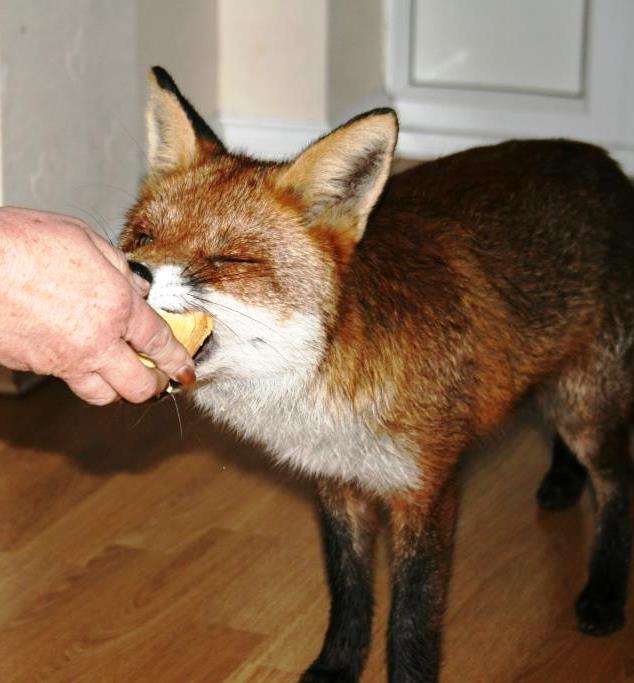A fox can hear a ticking watch from a distance of 60 feet. The cacophony of ticking and chiming from my clock workshop – my growlery – would prove deafening. But there are more extraordinary facts about foxes that deserve a mention.


It is so good to have the company of foxes in our garden. This year’s cubs have survived despite the noisy departure of their caring mum in midsummer when they were still tiny. Initially she would take food down to them in the den at the bottom of the garden. Vixens eat and then regurgitate food for their young. Later, before she disappeared, she would bring the cubs up to the house and watch protectively as they fed from the bowl.
And now young Lester is a regular visitor, more so than his two siblings who make only occasional appearances. None of them however are a patch on their great great grandmother, Fifi, who would leap up at the window to let us know she was around. Fifi would venture into the house to take sausages from your hand.
Sweet-smelling or sweat-smelling trainers?
Sometimes, when all the doors were open in summer, she would pop her head around the lounge door to gently remind us of her presence. We miss her stealing the boys’ sweet-smelling (well to a fox I guess they must be) trainers from the hallway and hiding them in the undergrowth like precious treasure.
Lester breakfasts with us. He sits patiently under the far tree. He doesn’t rush once we have put his food out. He’s content to watch and wait right up until the cluster of bickering magpies threaten to steal his fare. Being magpies, they fuss and skeeter, spending more time chasing each other away from the food than actually eating it. And Lester stalks his way up the lawn, using the wide trunk of near lime tree as cover. He circles the bowl then dines at leisure before heading off towards the den, always marking the same spot in the laurel bushes as he saunters home.
Those fascinating facts
So here are some extraordinary facts about foxes.
Ours are just three of an estimated 33,000 urban foxes. There are 225,000 rural foxes.
425,000 cubs are born each year but most don’t survive their first twelve months. Almost all die before their fourth birthday. Despite rural culls, the biggest cause of death amongst urban foxes is contact with cars or trains.

Foxes breed once a year, in January and February. The vixen is on heat for three weeks, but only properly fertile for three days.
Foxes can double the amount of light their eyes let in for night time hunting.
They can sprint at up to 30mph in pursuit of a rabbit.
But they prefer to hunt by stealth, listening then pouncing, like a cat. And here is the remarkable thing. They mostly pounce from a north easterly direction. When they do, they achieve a 73% killing rate. If they pounce from the south west, they achieve a 60% success rate. From any other direction, their success reduces to on average 18%.
Czech biologist, Cerveny, suggests the fox is uniquely using the Earth’s magnetic field as a range finder to make a more accurate pounce on where the sound is coming from. By finding the spot where the angle of the sound matches the slope of the magnetic field, the fox knows how far away the sound is and so precisely how far to jump. Other creatures may use magnetic fields to calculate direction; foxes, he says, use it to estimate distance.
Lester, however, needs no sophisticated range finder to locate his breakfast. A simple whistle and a tap on the side of his bowl brings him out onto the lawn in readiness. And as he makes his way towards his morning meal, another mouse or vole breathes an appropriately quiet sigh of relief at another day survived.
Find out more

I am totally indebted to John Lewis-Stempel for the fascinating and extraordinary facts about foxes. Go out and buy his book The Wild Life of the Fox (Doubleday, Penguin Random House 2020. £9.99). But please buy it from your local independent bookshop.